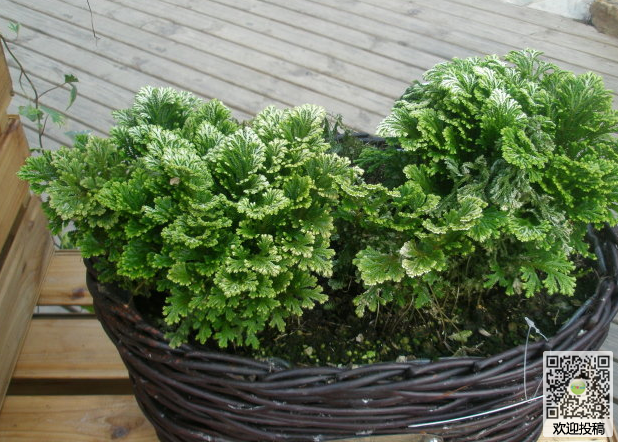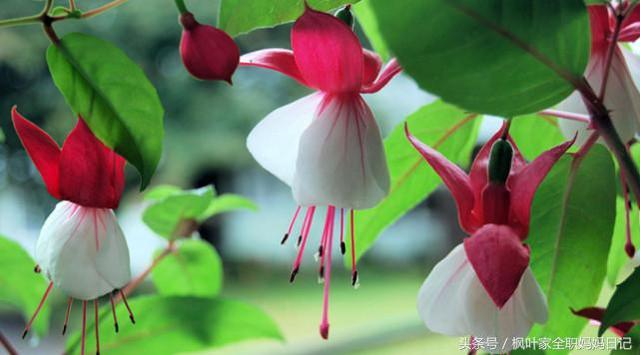Cultivation skills of potted rhododendron
It is not difficult to improve the pot method of rhododendron. As long as you master the skills, you are not afraid to raise a good cuckoo flowerpot. The following editors introduce the culture techniques and pest control methods of potted rhododendron. I hope everyone likes them.

Cultivation techniques of potted rhododendron
1. Soil: potted azaleas should choose loose acidic soil rich in humus. The cultivation of rhododendron should ensure that the potted soil is rich in acidic soil rich in humus, and that the soil is loose, permeable and well drained. Clay or alkaline soil. The pH value of acidic soil should be controlled between 5.5 and 6.5.
2, temperature: potted azaleas maintain indoor temperature, all kinds of rhododendrons, temperature requirements are not the same, most rhododendrons warm environment, the suitable temperature is between 15 degrees and 28 degrees, the temperature is generally too high when the room temperature is not less than 10 degrees in winter, the rhododendrons will stop growing, so it is easy to put in a cool and ventilated place in summer, and should be kept indoors in winter. If necessary, the indoor temperature can be increased to prevent freezing damage.
3, watering: potted rhododendron should be watered during flowering and summer. Rhododendron likes humid environment. In order to maintain sufficient moisture during flowering from April to June, it should be watered once a day in the evening. When the summer climate is hot and dry, due to water evaporation, it should be watered once a day. It is watered every four days in spring and autumn. The cuckoo enters the dormant period and reduces watering in winter.
4, sunshine: potted cuckoos should not be overexposed, cuckoos should not be exposed to the sun, should be given some shelter when placed in the sun to prevent branches from burning, but the specific light should also vary with the season, such as spring and autumn, the sun is not strong, about 20% of the shade, if it is flowering and summer, give 60% of the shade.
5, water quality: potted azaleas are better irrigated with natural water, better natural water are fish tank water, Rain Water, pond water, river water, which can usually store some "difficult water". The trapped water is to release water and azaleas at the same temperature for a day or two. water can reach the same temperature as the soil and store more nutrients.
6, fertilization: potted rhododendron should ensure lean fertilizer and diligent fertilization, like fertilizer should also avoid fertilization, each fertilization should not be applied more, February to March to promote its branches and leaves growth, can apply nitrogen, potassium-based light fertilizer once every 10 days. The flowering period is from April to June, which should be dominated by phosphate fertilizer, supplemented by potassium fertilizer, and fertilized every 5 days. When the temperature is higher than 28 degrees, fertilizer should be stopped. Less fertilizer is applied in winter. Apply some fertilizer or a small amount of ferrous sulfate to the water every day to maintain the acidity of the soil.
7. Change pot: potted azaleas change flowerpots in time. After the azaleas grow up, the flowerpots should be changed in time so as not to affect the growth. Generally speaking, 5-year-old plants should use 5-inch potted plants, and 7-10-year-old plants should use 6-inch potted plants. Flowerpots of 8 inches or longer should be used for 8 years. When changing the basin, some slow-release fertilizers need to be added.
8, pruning: pruning is an important measure of daily maintenance and management, which can adjust growth and development and make growth strong. Daily pruning requires the removal of some diseased branches and delicate old branches, and some dense branches are combined with the crown shape to increase ventilation and light transmission, which is conducive to plant growth. For the rhododendron garden, it is necessary to check frequently and find dead and diseased branches, which should be removed in time to reduce the spread of rhododendron diseases and insect pests.
9. Pick buds: the buds of potted rhododendrons should be collected in time to concentrate nutrients and supply flowers. Pruning is usually carried out in spring and autumn. Cut off horizontal branches, excessive branches, overlapping branches, weak branches, and remove residual flowers in time. Due to the shape of the trees, plastic surgery is usually manually modified to a natural tree shape as needed.
Diseases and insect pests of rhododendron and their control methods
1. Brown spot disease
[symptom] Brown spot is the main disease of rhododendron. When the disease develops well, small brown spots appear on the leaf surface and gradually develop into large irregular spots. Many black or grayish-brown spots are formed on the disease spot, causing the affected leaves to turn yellow and fall off, affecting flowering and bud development in the coming year. . The disease often occurs when the humidity is high in the rainy season.
[prevention and control] attention should be paid to making plants ventilated and transparent, not making humidity too high, and increasing the application of organic fertilizer and nitrogen, phosphorus and potassium fertilizer, so as to improve the ability of plants to resist infection and growth. If diseased leaves are found to be removed in time, they will be concentrated and burned. In the early stages of the disease, spray 0.5% Bordeaux solution or 0.4 wave high imitating stone sulfur mixture, and add 4% flour to increase adhesion. Leaf spots and black spots can also be treated in the same way.
two。 Yellow disease
Iron deficiency and yellowing often occurs in areas where the soil is alkaline. When the conditions are mild, only plant greening occurs. In severe cases, the leaf tissue turns yellow and the edges of the leaves are scorched. At the time of the disease, the leaves at the top of the plant are the most obvious and are usually caused by internal iron deficiency.
[control] change the iron deficiency in the soil and reduce the soil alkalinity. Add organic fertilizer to transform clay. For iron-deficient plants, 0.2% ferrous sulfate solution can be sprayed directly. You can also poke holes with a depth of 15 cm in the soil around the plant, and then slowly inject it with 10 × 177b molten ferrous sulfate solution to fill the holes to increase soil acidity and reduce alkalinity.
3. Military insect
[symptoms] the adult worm is small and flat, about 4 mm long, black, which is the most serious pest of evergreen rhododendron, often sucking the leaf sap behind the leaves, yellow and white appear on the leaf surface victims. Spots cause leaves to fall off, weakening trees and affecting growth and flowering. The azaleas in the greenhouse are very sensitive to this insect.
[prevention and control] can be sprayed with 1000 times of trichlorfon or 1500 times of omethoate or 1000-1500 times of chlorpyrifos emulsion.
4. Aphids
[symptoms] aphids mainly damage the young leaves of rhododendron. The lighter turns the leaves green. In severe cases, the leaves are curly, hardened and brittle, unable to absorb nutrients and affect flowering.
[control] at ordinary times, special attention should be paid to overwintering aphids. After winter, a 5-degree stone-sulfur mixture can be sprayed on plants to eliminate overwintering eggs, weeds near flowers and insect sources. During the aphid damage period, 40% dimethoate or omethoate added 1200 times the water, so that the solution was continuously sprayed for 3 to 4 times.
5. Short beard
Short shoulder is one of the most important pests of rhododendron. They often extract juice near the main veins on the back of the leaves, resulting in a lot of oily fields on the back of the leaves, which later cause the leaves to fall off.
[prevention and control] in mid-late October and early spring, spray 0.5 degree stone sulfur mixture of Bamey, spray 500 times of 25% insecticidal water swelling agent.
6. Red spider
Red spiders are small in shape, but very harmful to azaleas. It is most likely that azaleas are raised in high-rise buildings.
[control] manual killing. Pharmaceutical insecticides can be sprayed with a 5-degree stone-sulfur mixture. It can also be used to crush the juices of walnut leaves, carnation leaves and green stems. After diluting the juice with water, sprinkle with water and dilute with 1000 water. This is also a good way.
Time: 2019-05-12 Click:
- Prev

The concrete method of making Selaginella bonsai
Selaginella officinalis has a beautiful posture and is easy to cultivate. It is potted or placed in bonsai. Gardens are often used for rockery and hillside planting. What should you do to enjoy the bonsai? Next, you will bring the bonsai production method of Selaginella officinalis. Let's take a look.
- Next

How to raise the golden bell flower?
Why is it easy to buy fuchsia during flowering? What should be paid attention to in summer maintenance? many flower lovers are often attracted by the flower pattern of the golden bell, but when they buy it back, they will soon find that the fallen flowers and buds, and even the leaves have been shattered. If the leaves are yellow, they hang up easily. Why
Related
- Fuxing push coffee new agricultural production and marketing class: lack of small-scale processing plants
- Jujube rice field leisure farm deep ploughing Yilan for five years to create a space for organic food and play
- Nongyu Farm-A trial of organic papaya for brave women with advanced technology
- Four points for attention in the prevention and control of diseases and insect pests of edible fungi
- How to add nutrient solution to Edible Fungi
- Is there any good way to control edible fungus mites?
- Open Inoculation Technology of Edible Fungi
- Is there any clever way to use fertilizer for edible fungus in winter?
- What agents are used to kill the pathogens of edible fungi in the mushroom shed?
- Rapid drying of Edible Fungi

